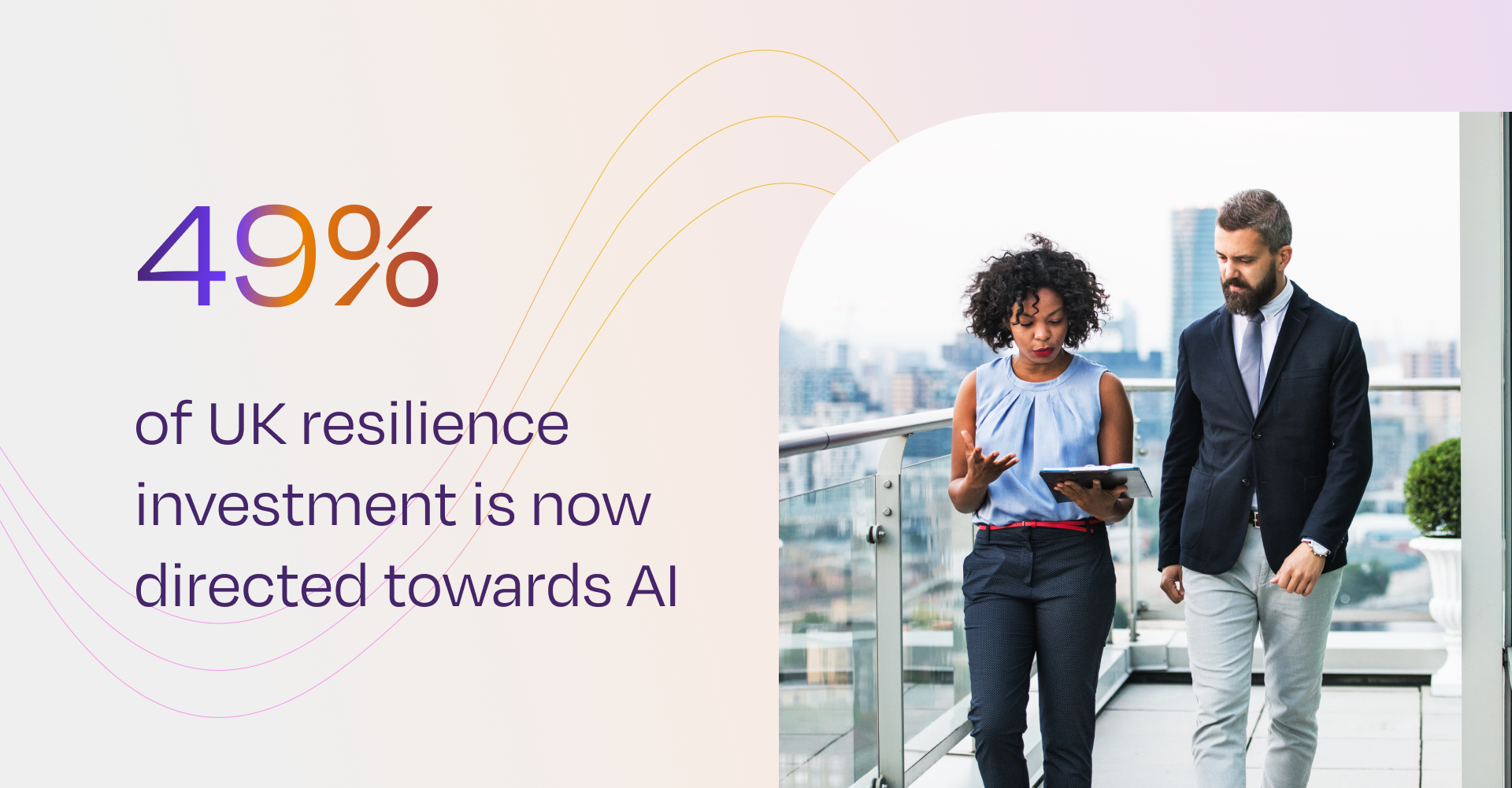Articles
AI will not save you
When it comes to AI investment – it’s no longer a differentiator, it’s a given. Every firm in the market is placing bets on AI, signing contracts, launching pilots and…

When it comes to AI investment – it’s no longer a differentiator, it’s a given. Every firm in the market is placing bets on AI, signing contracts, launching pilots and showing off prototypes. If you’re spending, you should know that so is everyone else. Across organisations boards are demanding visible progress, CTOs are locking in vendor platforms and delivery teams are scrambling to show progress. Despite all the energy and expense, real results remain elusive – not because the technology is broken, but because the thinking behind it is.
Too many organisations are replaying the same strategy used during the cloud boom: rush to adopt, trust the vendor narrative and hope that success will follow. But AI is not cloud and the rules are different – the risks sharper, and the rewards more nuanced. This time, copying the old playbook won’t get you where you need to go.
The AI spend is up and so are the risks
Organisations are rushing ahead – signing enterprise platform licences before use cases are even defined. Pilots are calibrated to satisfy quarterly KPIs rather than to solve real problems. Innovation metrics are being gamed to signal momentum, not measure impact. It’s the same story we saw with cloud: a vendor-driven strategy, an infrastructure-first mindset and a promise to figure our business alignment later.
We’ve been here before. After the first wave of cloud enthusiasm came the reckoning – fragmented architectures, runaway infrastructure costs and underutilised platforms. By 2023, more than 60% of European banks were actively pursuing cloud rationalisation programmes to rein misaligned investments and lacklustre returns. With AI, the same early warning signs are flashing. Tools are being deployed without integration. Pilots are spinning up with no clear ownership. Budgets are committed without a strategic blueprint.
But this time, the lag between action and consequence will be shorter. AI doesn’t just live in the backend – it reaches into customer experiences, critical workflows and judgement heavy decisions. The margin for misalignment is narrow and the cleanup won’t be quiet or delayed.
AI works just not the way you think
The real value of AI is not disruption for its own sake. It is practical impact at speed. AI earns it’s keep by solving problems that are currently slow, manual, error-prone or expensive.
W’ve seen it deliver through: automating credit approvals within set risk parameters, triaging customer support cases, summarising research so analysts focus on insight, flagging regulatory anomalies before submission.
These aren’t lab pilots staged for innovation theatre. These are operational tools, owned, measured and embedded into business process.
Most importantly: they are designed to enhance your employees, not eliminate them. When implemented well, AI amplifies human capability, unlocking capacity and sharpening decision-making – not replacing it.
Where you are going wrong
Most firms are already off track through five recurring failure patterns:
• Strategy with no execution path – AI positioned as a transformation pillar, not business-led investment. No roadmap, no owner, no timeline.
• Foundations that cannot support delivery – LLMs deployed on inconsistent, siloed, ungoverned data. You are building on sand.
• Buying the dream, inheriting the complexity – Pre-sales shows flashy PoCs. Production requires orchestration, integration, auditability. Vendors rarely highlight the operating model debt you inherit.
• Teams that cannot absorb what is being built – Engineering overstretched, risk and compliance brought in after launch, frontline staff given tools with no training.
• Optimising for visibility, not value – Success measured by launches, not adoption. Projects selected because they look ‘good’, not because they matter.
Which firm are you becoming?
As the AI wave accelerates, distinct organisational patterns are emerging – each with its own strengths, blind spots and risks.
• The AI Collector – A firm in rapid acquisition mode p signing platform deals faster than they can be integrated. Business units experimenting independently, deploying tools with little alignment or oversight. To the board it looks like momentum. To engineering, it’s a patchwork of incompatible systems and rising complexity.
• The Showcase Investor – Focused on visibility over value. Initiatives are selected for optics, not outcomes. Updates are published before results. Success declared at launch long before adoption or impact has taken hold.
• The Stealth Builder – Serious innovation is happening – but off the grid. Teams are solving business problems with AI, often in pockets of the organisation where governance hasn’t caught up. It’s authentic progress, but also a source of risk: tools built in silos, with limited oversight or integration.
Five questions worth answering before you scale
1. Who owns each AI initiative and do they know it?
2. What is your plan when the pilot ends?
3. Can your current architecture support live AI use at scale?
4. Which use cases have clear, measurable business outcomes?
5. How many roles have been defined to support your AI estate?
If you cannot answer these today, you are not ready to scale.
What good really looks like
AI doesn’t create more value through doing more. It creates value by enabling your people to do better and achieve more. The firms seeing real returns are not scaling pilots or chasing headlines – they are applying AI to remove friction, so teams can focus on high-quality, high-value work.
This means: one or two priority use cases chosen for impact, not visibility; a business lead accountable for outcomes; tools embedded into live workflows; risk and compliance engaged from the beginning; staff confident using tools designed with them, not for them.
The real power of AI lies in its ability to support clear thinking, confident decision-making and meaningful human work.
When your board asks what AI has changed, will you have something real to point to?















